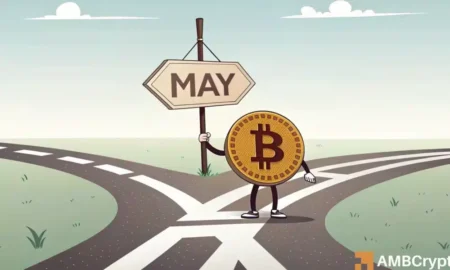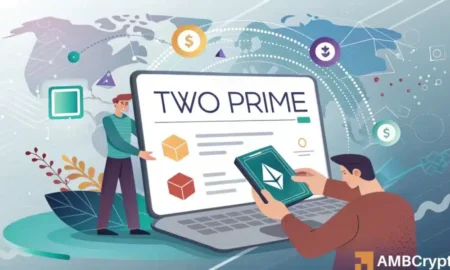The Future of Bitcoin and U.S. Gold Reserves: A Groundbreaking Proposal
In a significant turn of events, Sebastian Bea, President of Coinbase Asset Management, has put forward a revolutionary proposal that could change the dynamics of the U.S. government’s financial strategy concerning Bitcoin. In a recent interview on The Scoop podcast, Bea presented an innovative idea to revalue the U.S. gold reserves, potentially unlocking $100 billion in budget-neutral capital for major Bitcoin acquisitions. This proposal has sparked conversations in financial circles, emphasizing a fresh perspective on how governments can engage with cryptocurrencies.
The Current Landscape of Gold Reserves
The U.S. gold reserves, consisting of approximately 261.5 million ounces, are still recorded at an outdated price of $42.22 per ounce, a figure that hasn’t changed since 1973. With the current market rate exceeding $3,300 per ounce, this anomaly creates a staggering $900 billion gap between the book value and actual market value. Bea argues that an adjustment to this outdated valuation could empower the U.S. Treasury to capitalize on this discrepancy, thereby directing unrealized gains into a sovereign fund leveraged for strategic acquisitions, including Bitcoin.
The Legislative Shift
Bea proposed that a simple legislative amendment to 31 U.S.C. § 5117 could allow for this necessary revaluation. This change would enable the U.S. Treasury to issue higher-denomination gold certificates, utilizing the resultant mark-to-market gain in a budget-friendly manner. Such a shift would facilitate investments in Bitcoin without technically increasing the national debt, creating an innovative financial strategy designed to harness the benefits of both gold and cryptocurrencies.
Implications for Bitcoin’s Growth
As Bitcoin approaches the critical resistance level of $95,000–$96,000, this proposal may arrive at a pivotal moment for the cryptocurrency. If Bitcoin breaks through this barrier, it could initiate significant market growth, encouraging a new wave of investments and laying the groundwork for Bitcoin to become a legitimate reserve asset on a national scale. Bea’s strategy exemplifies a potential future where Bitcoin complements traditional assets like gold, reshaping investment strategies and governmental financial frameworks.
A Global Ripple Effect
Should the U.S. adopt Bea’s proposal, it could trigger similar initiatives across global governments, prompting a renewed race for Bitcoin akin to what’s currently happening with gold. Many central banks are already amassing gold reserves at unprecedented levels, indicating a growing recognition of these commodities as valuable assets. A coordinated global approach to Bitcoin could fundamentally alter the financial landscape, encouraging innovative monetary policies worldwide and integrating cryptocurrencies into national reserves.
Conclusion: The Road Ahead for Bitcoin and Government Finance
Bea’s audacious proposal serves as a wake-up call for policymakers and financial stakeholders. By revaluing gold reserves and strategically investing in Bitcoin, the U.S. government can navigate an evolving fiscal landscape that embraces digital currencies. As Bitcoin teeters on the edge of a significant breakthrough, the interplay between traditional finance and innovative digital assets will dictate the future of investment strategies and national economic policies. The question remains: will global governments be ready to heed this call to action in an ever-changing financial world?
















